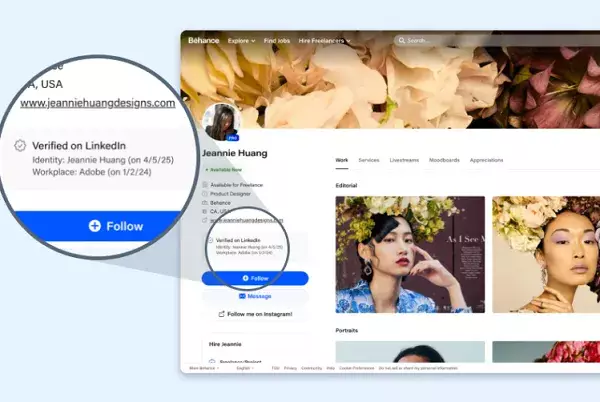In the digitally interconnected world we inhabit, where virtual interactions often replace face-to-face meetings, the need for reliable identification has never been greater. LinkedIn is stepping up to the plate with its innovative ID verification system, designed to not only authenticate users but also fundamentally reshape how professional relationships are established online. By allowing third-party platforms to display its ID verification markers, LinkedIn is setting a new standard for credibility in professional networking, creating an environment where trust and authenticity can thrive.
The introduction of a free ID confirmation service in 2023 heralded a new era for LinkedIn users. In stark contrast to the celebrity verification processes of other social media platforms, which often reek of elitism, LinkedIn’s approach democratizes trust. By partnering with local ID verification providers, LinkedIn is actively dismantling the barriers that come with traditional verification. With this update, users are equipped to display a confirmation tick, a simple yet powerful symbol that affirms their professional identity. The significance of this cannot be overstated; in an age rife with misinformation, a verified identity is crucial in establishing both legitimacy and integrity.
The Integration of Third-Party Platforms
The move to enable third-party partners to showcase LinkedIn’s ID verification marks opens up avenues previously thought unattainable. Notably, Adobe’s incorporation of the “Verified on LinkedIn” badge within its new Content Authenticity app and its Behance portfolio platform exemplifies the practical benefits of this integration. By leveraging LinkedIn’s robust verification system, Adobe can sidestep the complexities and resource burdens typically associated with building its own verification processes. It’s a win-win scenario: creators who have been authenticated through LinkedIn can now seamlessly present their credibility across multiple platforms, reinforcing their professional stature and connection to their audience.
This collaborative approach not only enhances user experience but also posits a framework for a new standard across social media and professional platforms. Imagine a world where your digital identity is not just a statement but an embedded truth visible across various applications – that’s the future LinkedIn is paving. Such innovations can facilitate smoother and more reliable networking, reducing barriers and promoting a culture of transparency in showcasing credentials.
Combatting Digital Deceptions
The implications of LinkedIn’s ID verification system extend far beyond mere decoration on profiles. By fostering an environment that encourages real connections authenticated through objective verification, LinkedIn tackles pressing issues such as spam, bot malfeasance, and user impersonation. As the platform reports that over 80 million members have engaged with its ID confirmation process, it is evident that this initiative is resonating with users. A trusted network can significantly minimize the risk of deceit, making LinkedIn a beacon of professionalism that stands in contrast to the rampant chaos found on less regulated social media arenas.
Conversely, while enforcing accountability among users has its advantages, it raises significant concerns regarding user anonymity. The fine line between fostering responsible digital behavior and infringing upon personal privacy is a delicate balance that LinkedIn seems to navigate adeptly. By integrating verification without compromising user autonomy, the platform encourages members to proudly display their real identities, particularly in a space where networking can lead to lucrative opportunities.
A Vision for the Future
Moreover, the partnership with Adobe’s Content Credentials system introduces a revolutionary concept of content ownership intertwined with identity verification. This synergy will undoubtedly provide creators with enhanced capabilities to assert and trace their digital work, which is paramount in an era characterized by rampant AI-generated counterfeits. As digital authenticity grows increasingly important, the fusion of ID verification and content ownership is likely to play a pivotal role in establishing trustworthy environments across the digital landscape.
This proposition not only serves to empower creators but also sets a precedent that regulators might find compelling as they look into universal verification practices. The movement toward seamless verification across platforms may catalyze a broader discourse around user identity, potentially leading regulators to rethink the precarious dance between anonymity and accountability.
In a world where the line between real and fabricated continues to blur, LinkedIn’s advancements in ID verification could serve as a compass guiding the industry toward a future where professional relationships are grounded in authenticity, trust, and seamless integration across platforms. As the conversation around ID verification continues to evolve, it behoves us all to engage critically with these changes, advocating for systems that bolster trust while protecting personal liberties.

